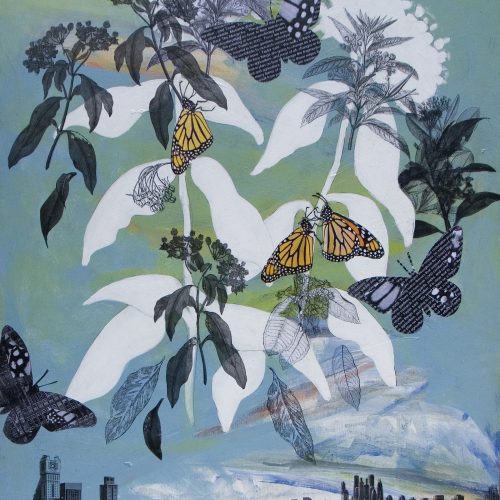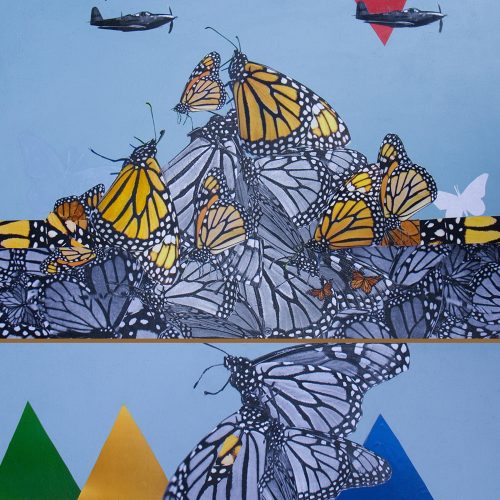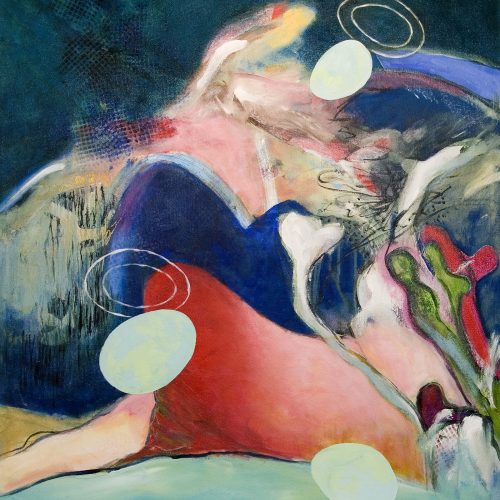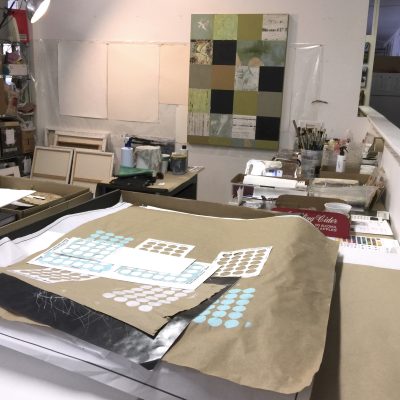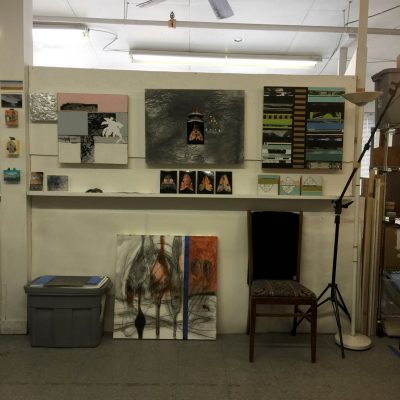Dorothy's Story
Dorothy Doherty received her formal art education from Vancouver School of Art (Emily Carr University of Art & Design) and Capilano University. She also holds an MA in History in Art (University of Victoria, 1984-1993) and a PDP (Simon Fraser University, 1995). She supplements her formal education with courses and workshops in a variety of media.
Dorothy was born in Vancouver, BC, and spent her formative years in the Vancouver area. After graduation from art school, she lived more than 20 years in various parts of BC, working and teaching ceramics in Victoria, Williams Lake, Cranbrook, the Kootenays and other parts of the BC Interior. During this time she worked extensively with the local potters guilds, and taught credit courses for Cariboo College (now Thompson Rivers University). After completing her Masters Degree and PDP (Professional Development Program), Dorothy was employed as an art specialist and civilizations instructor for school district #44 (North Vancouver). On retirement she attended the Studio Art program at Capilano University to upgrade her skills, learn how art has changed over the years, and discover where she fits in to the current art scene.
Dorothy exhibits regularly in group and solo shows. She lives in Burnaby, BC., paints at Portside Studios in Vancouver, and works with ceramics at the Shadbolt Art Centre in Burnaby, BC.
Dorothy's Story
Dorothy Doherty received her formal art education from Vancouver School of Art (Emily Carr University of Art & Design) and Capilano University. She also holds an MA in History in Art (University of Victoria, 1984-1993) and a PDP (Simon Fraser University, 1995). She supplements her formal education with courses and workshops in a variety of media.
Dorothy was born in Vancouver, BC, and spent her formative years in the Vancouver area. After graduation from art school, she lived more than 20 years in various parts of BC, working and teaching ceramics in Victoria, Williams Lake, Cranbrook, the Kootenays and other parts of the BC Interior. During this time she worked extensively with the local potters guilds, and taught credit courses for Cariboo College (now Thompson Rivers University). After completing her Masters Degree and PDP (Professional Development Program), Dorothy was employed as an art specialist and civilizations instructor for school district #44 (North Vancouver). On retirement she attended the Studio Art program at Capilano University to upgrade her skills, learn how art has changed over the years, and discover where she fits in to the current art scene.
Dorothy exhibits regularly in group and solo shows. She lives in Burnaby, BC., paints at Portside Studios in Vancouver, and works with ceramics at the Shadbolt Art Centre in Burnaby, BC.
The Process
I am particularly concerned with the effect humans have on the natural environment, to the extent that many forms of life no longer exist. My 2-D work straddles the line between abstraction and realism. It examines a variety of issues, including urban decay, global issues and the beauty of the world around us – whether in man-made structures or the mysteries of nature.
Much of my work addresses over-consumption in our society, and in particular, the huge amount of recycled paper in domestic recycling bins. My first venture into working with paper on panel began several years ago, and its importance was reinforced in workshops with the American artist, Michael Shemchuk. A six-month residency in Port Coquitlam allowed me to continue this work, taking it in new directions. Over the years I have experimented with single and multiple layers of paper, scraping and sanding back the layers, and exploring various finishes and bonding materials. I plan to continue this process of investigation, with a view to learning what developments will grow from continued work with these non-traditional art materials.
I am also working on a series of artworks based on the plant world, especially plants that have survived and grown in harsh environments. Some are weeds. Others appear in roadside gardens, round-abouts, and in community gardens where plants have become wild. I am also interested in urban art, in particular, human and animal habit, and areas where signs of gentrification are evident. As new developments replace older structures, there is often a tremendous loss in terms of human interaction and the fragmentation of community. It is these areas that I wish to record before they are lost to encroaching re-development.
I really don't have any pre-conceived notions or hopes in terms of what the community thinks of my art or gains from [my art]. But I do have a need to exhibit. My work does not sell easily, but I want the work to be seen. I know my work appeals to some people, because they say so. That means something I do resonates with them. That's why I exhibit—to learn that the work is important on some level. I believe that working in experimental ways shows the viewer a multitude of approaches to life and art, and that some are more adventurous than others.


